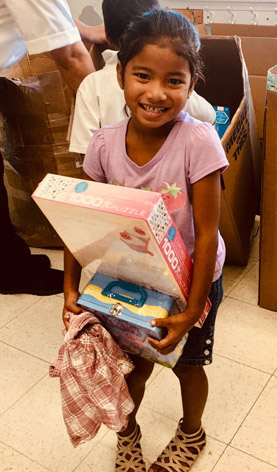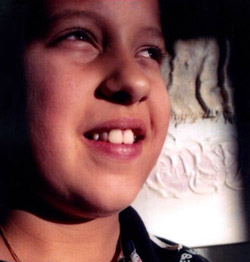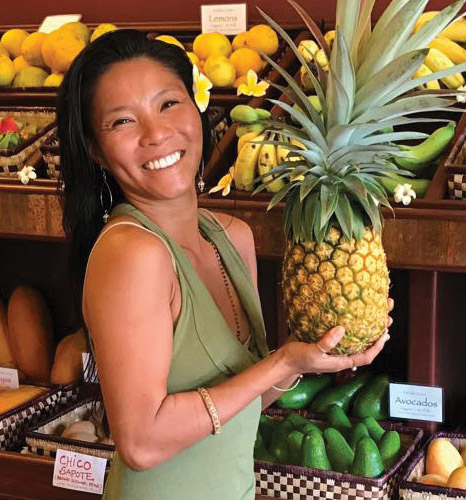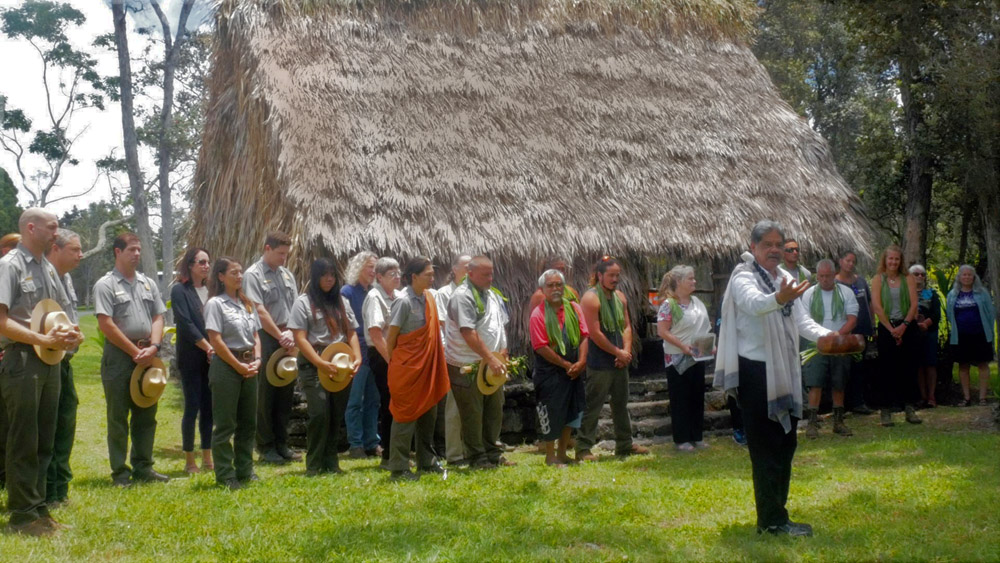
The Hidden Power and Tradition of Oli
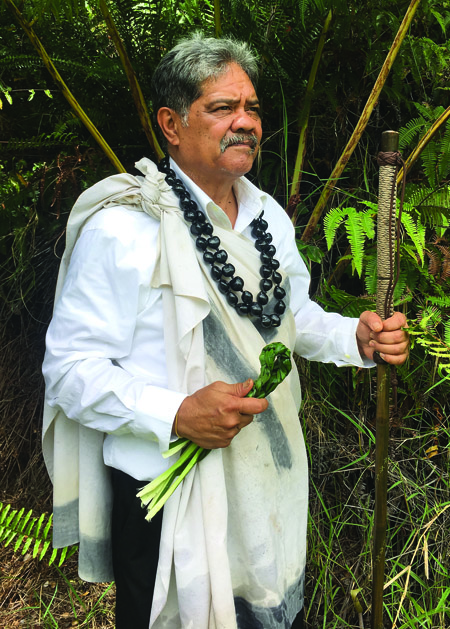
By Karen Valentine Kapono
Just imagine a sophisticated culture whose history and daily news was never written down, only spoken. This is a story about oli, or Hawaiian chant, the Hawaiians’ chosen method of all communication. It was never intended only for entertainment, though you have most likely heard examples of oli—as either a spoken chant, or a mele or song—accompanying hula at the Merrie Monarch Festival, during a blessing ceremony, or as part of a Hawaiian music performance. You may not know of the many layers of meaning hidden inside these oli, nor its history.
When the first western visitors witnessed and recorded their impressions of Hawaiian culture, they particularly noted the sounds of mele and oli drifting toward them.
In 1823, missionary William Ellis trekked throughout Hawai‘i Island and kept a detailed journal, including his comments about the language, “The sound of their language is peculiarly soft and harmonious; great attention is also paid to euphony, on account of which the article is often varied.” He noted its similarity to Tahitian and other Polynesian dialects: “Each of the dialects appears adapted for poetry, and none more so than the Hawaiian.”
Chanted Hawaiian words and phrases could be called spoken Hawaiian poetry because of their rhythm and beauty. This poetry was often filled with kaona (hidden meanings). A phrase about a pua (flower) could be referring to a sweetheart or a beloved place, even a highly regarded monarch. A phrase mentioning chattering birds may refer to gossip, for example. The mana (spiritual power) of an oli is layered in its themes and kaona. Additional hidden meanings, like rain as a metaphor for love, or the lehua blossom as a metaphor for warrior, could make a chant either a recounting of an actual event or reference to love and war, depending on who heard and understood the chant. As such, the oli may be understood on different levels by different people.
Chants were composed for many reasons, such as chants of birth, death, genealogy, love, naming, praise, prophecy, or events. A chant composed for a particular person became the property of that person or that ‘ohana.
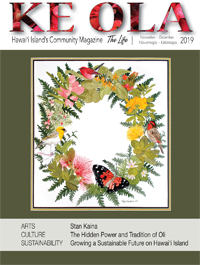
“Haku mele” is the Hawaiian name for a composer of chants and for many it was a lifelong role or kuleana. In a somewhat close English equivalent, this was a storyteller or bard who was the keeper of the oral history—a living historian and genealogist. Individuals were chosen in their youth or inherited the calling. The story was accurately committed to memory, sometimes covering more than a hundred generations and several thousand years. This type of kahuna was highly respected as a master of language, composition, and kaona.
Ellis writes: “The late king had one of these bards attached from infancy to his household who, when required, would recite [an oli] on any particular event relating to the family of his sovereign. Some [were] about family but the most popular were the national songs…When I first visited, one [mele about] the battle of Tuamoo [Kuamo‘o], was in the mouth of almost every native we met.”
In the documentary film, Mana I Ka Leo: Power of the Voice, the strong connection between oli and the elements is spoken of and demonstrated: “Oli is Hawaiian chant and serves as a calabash, carrying the information necessary for man to coexist with each other, their environment, and their gods. The Hawaiian way of life was and is based on their connection to land and natural elements. Respect was profound and beyond modern comprehension. Oli was the way in which this energy was conveyed.”
Hawaiian chant of today falls into two broad categories, mele oli and mele hula. Mele oli are chants delivered with no musical instruments and are generally performed by one individual in a blessing, a prayer, or as part of a ceremony. Mele hula are chants accompanied by an ipu (gourd) or pahu (drum) accompanying a dancer or dancers, blending both voice and movement to tell the story. The words carry the mana and the dancer’s motions interpret the theme.
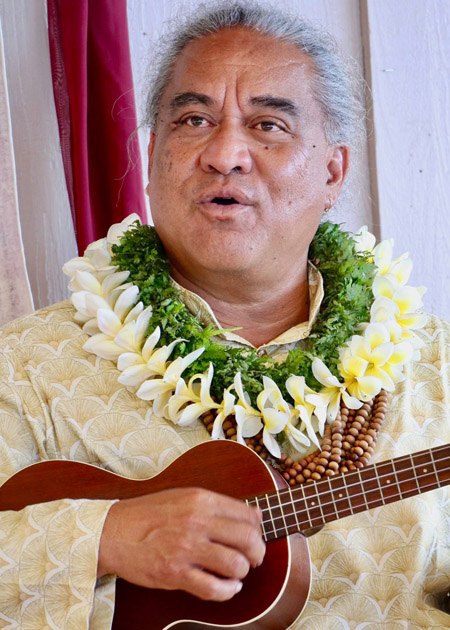
Depending on its purpose, the oli is performed in a specific vocal style. For example, kepakepa style (rapid rhythmic recitation) for prayer chants, ho‘āeae style (soft and short drawn-out vowels) for love chants, and others for wailing or lamenting chants.
Recently, at a dedication at Ka‘auea inside Hawai‘i Volcanoes National Park, oli master Kumu Moses Kaho‘okele Crabbe of Halauolaokalani conducted a blessing for a newly constructed hale (traditional-style Hawaiian house) for dancers to prepare for performing at the hula pā (elevated platform) next to it, which was built in 1979.
“I have learned oli, the art of Hawaiian chant, from my teachers, Aunty Nona Beamer and Ho‘o‘ulu Cambria. My specialty is olioli. In this style a strong vibrato travels between the consonant sounds to the ending vowel sounds, all coming to a nice pillow that you are going to put your voice on to put it to sleep. My chanting teachers told us that we have to oli in a way that sounds pleasing and not harsh to the listeners—not loud and grating, but soft and gentle.
“I’ve been chanting since I was 17 years old and I feel in my heart and in my na‘ao that it is a gift that has been given to me for my generation to pass on to the next generation.”
Kumu Kaho‘okele was a teacher of Hawaiian language, oli and hula, teaching first at a Keaukaha immersion program, then at Kamehameha Schools for 15 years.

Asked to whom he is addressing his oli, Kumu Kaho‘okele said, “I am actually communicating to all of my ‘ohana that have passed on, to all of my tūtū, my ‘aumakua, to all of my teachers that have passed on, to all of my hula brothers and hula sisters. To all of those who are not here, we address them first so they can come here and participate with us. It is a call out to all of our spirit world to come and sit with us in ceremony and say you are welcome here because you have had a relationship here, as in the case today with brother Ab” (the late Kumu Ab Valencia, who taught and performed with his hālau at the park for years). “What I did today was to call out to them to ask how I can be used to interpret for the people that which I receive, and to come and see the work that we have done. And actually we know that their receiving is a true confirmation because the ua [rain] is falling down now, where five minutes ago it wasn’t.
“I have a very strong connection with the elements. I am constantly looking at and feeling the wind, constantly looking at the rain, seeing what kind of rain is falling down. Falling now is the pu‘ulena rain—not a very hard, hard rain, but a very welcoming rain that is polishing off, making sure that everything is clean for the hale noa project that has just been completed for our kumu hula and hālau to prepare appropriately in mind, body and spirit as they get ready to perform on the pā.
“I had to grow into the spirit of being a chanter,” he says. “At first my teachers told me told me that I wasn’t ready. You need to be ready, to be poised, cognizant and understanding to this art because it’s work to pray, work to ask, work to chant and prepare the right vocabulary to have the oli and your voice reach the other side. If not, they have no reason to come and visit you. It has to come from the heart, from the inside.
“This is a very important time for our people to understand that those who are trained in hula or oli or any of the arts can tell if you have the spirit or not. If I hear a chant and the chanting is not done appropriately, I can tell because I’ve been there. This is not a time to fool around; this is a time to embrace, to understand and come to a place where we all can meet. It is not a performance; you may think it is, but how the chanter views what they do is their responsibility.
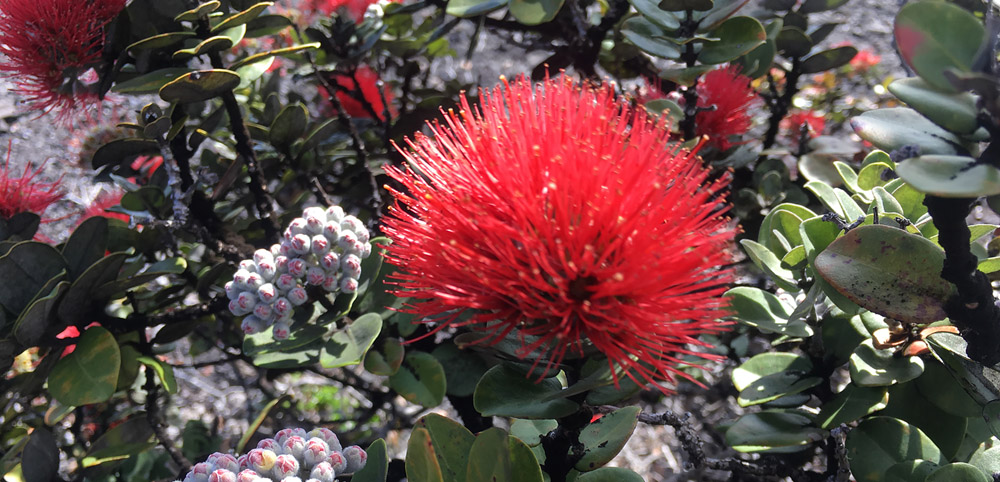
“Oli can go with hula,” he says, “but also with protocol. Oli is a form of ho‘okupu, so whenever you greet or don’t have a physical ho‘okupu, you can use your voice as a form of ho‘okupu.”
Kumu Kaho‘okele is often asked to do blessings in the community. He says it is now the majority of his work. He may name babies, and his forté is to perform “a hui hou chants” (funeral chants that mean “until we meet again”). He often composes them particularly for the one who has passed. That is what he is preparing to do this day as we say “A hui hou.”
The next time you hear oli, listen not only to the words but try to pick up the meaning with your heart as you feel the energy of the chanter and the spirit surrounding him or her.
For more ‘ike (knowledge), continue to follow Kumu Keala Ching’s compositions in each issue of Ke Ola Magazine (see page 9 of this issue). They, too, may be spoken as oli, and contain ample kaona for you to discover and decipher. ❖
For more info:
kumukahi.org
https://apps.ksbe.edu/olelo/learning-place/
Journal of William Ellis: A Narrative of an 1823 Tour Through Hawai‘i
Mahalo Kings’ Shops—Culture Story Sponsor
